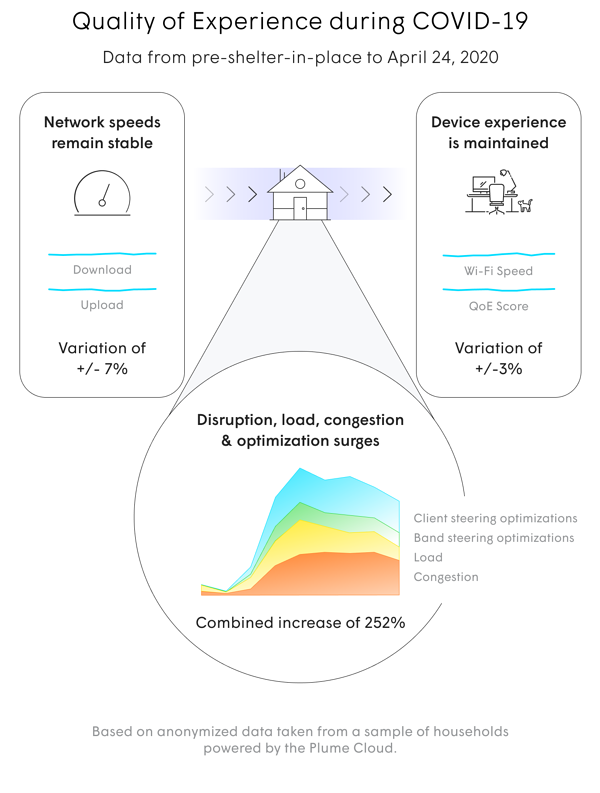A happy device is a happy customer: The need for QoE
Read time: 3 minutes

Shelter-in-place, safer-at-home, and remote-work policies have had a profound effect on today’s broadband ecosystems, and nowhere is this more evident than inside consumers’ connected homes.
The impact here has been massive, to say the least, with in-home device usage and data consumption peaking at 120% above pre-COVID levels. And even today, with much of the country softening their stance on lockdown restrictions, we are still seeing a 70% increase in connected device usage at home compared to the “good ol’ days” of before.
Importantly, companies like Facebook, Google, and countless others have all extended work-from-home options well into 2021. School is back in session, but many brick-and-mortar classrooms have been replaced by virtual Zoom meetups. And consumers are dramatically cutting back their visits to big-box stores, and instead are opting for online retailers. In fact, this holiday season is expected to be the biggest in ecommerce history. Welcome to the New Norm!
But as the number of connected devices continues to climb, so too does the level of strain we place on our home networks, and customer frustration is soon to follow. This means more support calls, truck rolls, and ultimately, subscriber churn. So, it’s no surprise that to keep consumers happy, delivering a flawless internet experience to every device – whatever the application – is an absolute must.
To help address this need, Plume developed a new algorithm called Quality of Experience (QoE), which incorporates a wide range of data to identify and assess “device happiness” more accurately. After all, a happy device is a happy customer who is less susceptible to churn. Powered by our cloud-based AI technology, QoE provides an intelligent understanding of what’s actually happening across a home network, and goes far beyond traditional means of measurement like Quality of Service (QoS).
What exactly does this mean? To better understand what is really happening inside our connected homes, Plume’s QoE considers:
- The entire set of paths from the internet to the devices in the home, particularly paths that include one or more hops of Wi-Fi. Most devices today are connected via Wi-Fi, and Wi-Fi is often the biggest problem area on the path.
- A broader range of network performance factors such as data rates, signal strengths, packet error rates, interference, channel utilization, broadband throughput, and the topology of the network in question.
- The needs of each device in the home, such as the type of device, networking capabilities, current and historical data usage, and any other requirements in its specific environment.
With data from more than half a billion devices across more than 19 million locations worldwide, we’ve seen firsthand how home Wi-Fi networks are evolving, and importantly, what must be done to ensure optimal levels of service.
Many Service Providers believe they’re satisfying customer needs by maintaining the QoS to the router or gateway. But our data has shown that it is inside the home where load and congestion reach peak levels. Looking at QoE, we realize that to keep each device happy, a much higher level of optimization is needed.

The deep insights gleaned from Plume’s QoE can be leveraged to better guide network configuration, establish whether additional Wi-Fi access points are needed, and can even enable support personnel to identify and resolve connection issues before a subscriber is aware of a problem. Equally important, these insights enable home networks to adapt in real time to the needs of devices as they arise.
The connected smart home is far more complex than it used to be, and the airwaves are only getting busier. With the complexity brought on by the realization of Smart Home 2.0, the need to treat each device individually has never been greater. It is here that Plume’s QoE measurement truly shines, delivering an optimal experience regardless of the device or the application being used.
As we lean forward into the future of the connected home, Service Providers and Device Manufacturers must understand that happy devices equate to happy customers. It’s the secret sauce to driving new subscriptions, deepening penetration, preventing churn, and ultimately improving bottom lines.
